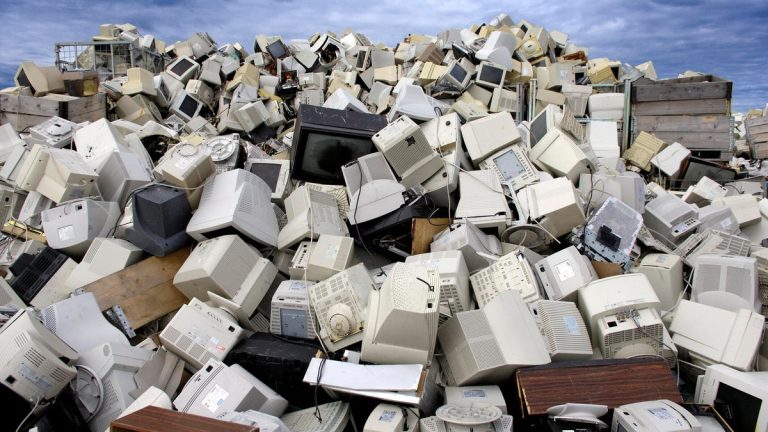
Electronic waste (e-waste) is a rapidly growing global problem. It refers to discarded electrical or electronic equipment, including computers, televisions, mobile phones, appliances, and other devices. As technology advances and the lifespan of electronic devices shortens, the amount of e-waste generated worldwide continues to increase at an alarming rate.

Global E-Waste Production
According to the Global E-Waste Monitor 2020 report, the world generated an estimated 53.7 million metric tons of e-waste in 2019. This figure represents a significant increase from previous years and is expected to rise further in the coming decades.
Regional E-Waste Production
The distribution of e-waste production is uneven across different regions:
- Asia: As the world’s largest producer of electronic goods, Asia also generates the most e-waste. China, India, and the United States are among the top e-waste producers.
- Europe: Europe has a relatively high e-waste generation rate due to its developed economy and high consumption of electronic devices.
- Africa: While Africa has a lower overall e-waste generation rate, its production is expected to increase rapidly as the continent’s economy grows and more people gain access to electronic devices.
- Americas: The Americas, including North and South America, generate a significant amount of e-waste, primarily due to high consumption levels in the United States and Canada.
Factors Driving E-Waste Growth
Several factors contribute to the increasing production of e-waste:
- Technological Advancements: The rapid pace of technological innovation leads to shorter product lifespans, as newer models with improved features become available.
- Consumerism: Rising consumerism and the desire for the latest gadgets and devices contribute to increased e-waste generation.
- Planned Obsolescence: Some manufacturers intentionally design products with limited lifespans to encourage consumers to purchase new models.
- Economic Growth: Economic growth and rising living standards in developing countries lead to increased demand for electronic devices.
Challenges of E-Waste Management
Managing e-waste poses significant challenges:
- Hazardous Materials: Many electronic devices contain hazardous materials, such as lead, mercury, cadmium, and chromium, which can contaminate the environment if not disposed of properly.
- Informal Recycling: A large portion of e-waste is recycled informally in developing countries, often under unsafe conditions and with limited environmental safeguards.
- Lack of Infrastructure: In many regions, there is a lack of adequate infrastructure for e-waste collection, transportation, and recycling.
- Cross-Border Shipments: E-waste is often shipped illegally to developing countries with weaker environmental regulations, contributing to the global e-waste crisis.
Addressing the E-Waste Problem
To address the growing e-waste crisis, it is essential to implement comprehensive strategies that promote responsible consumption, recycling, and disposal. These strategies may include:
- Extended Producer Responsibility (EPR): Holding manufacturers responsible for the end-of-life management of their products.
- Improved Recycling Infrastructure: Investing in e-waste collection and recycling facilities.
- Public Awareness Campaigns: Educating consumers about the importance of responsible e-waste disposal.
- International Cooperation: Developing international agreements to regulate the trade and disposal of e-waste.
By taking collective action, we can reduce the environmental and health impacts of e-waste and ensure a more sustainable future.
read more : E-Waste: A Growing Global Problem



